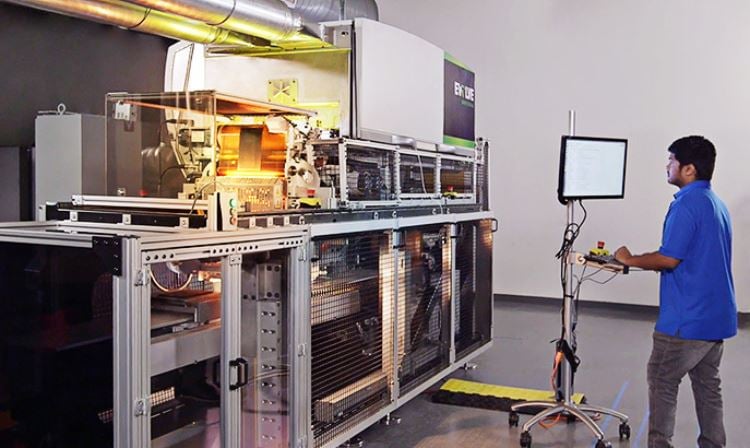![A STEP system in use [Image: Evolve Additive Solutions]](https://fabbaloo.com/wp-content/uploads/2020/05/evolve_img_5eb09649291b2.jpg)
Evolve Additive Solutions has teamed up with Evonik for a joint material development agreement.
As 3D printing technologies continue to evolve, increasing focus is being turned to materials that can fulfill the promises of the hardware. So increasing is the focus that, indeed, we’re regularly inundated with announcements of traditional chemical companies stepping further into additive manufacturing.
The relationships between these well-established suppliers with 3D printing OEMs make a great deal of sense for both sides. 3D printer makers gain access to long-running expertise in materials science, potentially adding well-known brands to their own materials portfolio. The materials companies, in turn, are in many cases responding to demand from their customers, who want to use familiar materials in their new 3D printers.
Evonik has long been taking an active interest in the 3D printing industry. This latest relationship will see the specialty chemicals company work closely with the team at Evolve to “offer a wider range of thermoplastic material for production of additive manufacturing applications.”
Evolve’s selective thermoplastic electrophotographic process (STEP) is a production-focused solution that has gained a great deal of interest, investment — and momentum.
“STEP has been developed for volume manufacturing so offering the widest range of thermoplastic materials to our customers is a critical element for production,” said Steve Chillscyzn, CEO of Evolve Additive Solutions. “The joint development agreement with Evonik allows us to broaden the spectrum of STEP materials to include materials currently accepted by OEMs from additive manufacturing, but more importantly to debut a whole new set of materials opening up more applications that can take advantage of everything additive manufacturing offers.”
While many such relationships often target one or two materials to get the teamwork ball rolling, four types of polymers are set for Evonik and Evolve’s initial forays: “polyamide 12, PEBA, transparent polyamide, and polymer of the polyamide 6 series.”
These are just a start; the companies say:
“In the future, the combined efforts will result in a wider range of materials for STEP users with more 3D printing material choices for production that are commonly used in traditionally manufactured products.”
The 3D printing of familiar materials is a demand that really can’t be stressed enough. As 3D printing continues to move into production applications, ensuring that all quality needs are met is critical. To compete with injection molding, for example, parts need to have the isotropic strength expected of traditional results, as well as all material and mechanical properties to successfully and reliably perform their functions.
What better way than to use the same materials? We know by now it can’t be a direct drop-in solution; materials for additive manufacturing must be formulated to survive the 3D printing process as well as any required post-processing treatment. Unsurprisingly, conditions inside a 3D printer are not the same as the environment of a molding operation. Reformulating requires familiarity with the materials and processes — and so joint development efforts are a strong effort to producing the desired results.
And then there’s development beyond reformulation and using known materials science to create new, customized offerings made specifically for a given 3D printing process.
“Evolve’s entirely new technology approach will allow us to expand the range of applications of our high-performance materials, which are produced through a unique production process. With more than 20 years of experience in 3D printing, we will also develop a wider range of customized material formulations to unlock the full potential of the STEP technology,” said Thomas Grosse-Puppendahl, the Head of the Additive Manufacturing Innovation Growth Field at Evonik.
Evolve’s STEP offering is slated for commercialization late next year; as of right now, it remains in the alpha development stage.
Via Evonik and Evolve Additive Solutions











An inventive designer has developed a method for producing 3D paper objects using recycled paper and 3D printed molds.